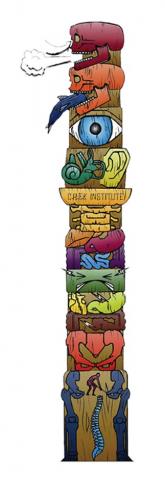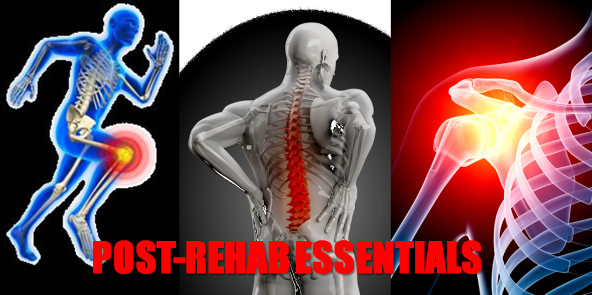All Things Thoracic Spine Part 3: Corrective Strategies
So in Parts One and Two, I discussed how the anatomical features of the t-spine are so important, and how to see if there was any issues with the mobility and relative function of the area. Today we’re going to go through some corrective strategies that can be used to make it bullet-proof and make people envious of your awesome postural skills. Be careful where you walk, though, because I’ll be dropping knowledge bombs left right and centre. Watch your step.
Correction #1: Breathing Impairments
When I discussed breathing mechanics in the last post, I’m sure I got a few head tilts that lead many people to thinking I’d gone completely off my rocker, but the truth of the matter is that without being able to breathe adequately, everything suffers. I’m sure that listening to someone drone on about breathing is as sexy as watching dishes drip-dry in the sink, but some really smart people will keep telling you it’s important. Paul Check even puts it at the top of his “Functional Totem Pole,” meaning its’ importance is higher than any other systems within your body. To ignore it is to miss its’ importance.
As a result of sitting in n office jobs for years on end, we have a lot of people in the population who have forgotten how to use their ribs to breathe, and as a result they have to rely on their external obliques to pull their diaphragm, their scalenes to elevate their ribs, and wind up taking shorter and shallower breaths than they should, getting side stitches and neck stitches as a result of these areas working harder than normal.
One of the easiest corrective strategies relating to breathing mechanics is to get people to simply tai deep breaths and try to fill their entire lung volume as much as possible. This typically requires sitting up straight and expanding the ribs, pulling the t-spine into slight extension. Another option is to use a bit of biofeedback, wrapping an elastic around the ribs and having the person breathe in with the goal of stretching the band with their ribs.
ARVE Error: id and provider shortcodes attributes are mandatory for old shortcodes. It is recommended to switch to new shortcodes that need only url
Sure, you could say that my neck wasn’t in neutral in this video, but the main goal isn’t to try to get posture absolutely perfect, but to feel the ribs expanding against the band to try to get the intercostals to pick up their share of the load.
Another option is to try to get deep inhalation during overhead shoulder work. A simple starting point is to have the person lie on their back and bring their arms straight up overhead while taking in a deep breath.
ARVE Error: id and provider shortcodes attributes are mandatory for old shortcodes. It is recommended to switch to new shortcodes that need only url
From here, you could progress to a much more advanced exercise up against a corner. The effect of gravitational loading pushing down against the arms as they come up will challenge the scapular stability in a way that wasn’t present when lying flat on the ground, and will help to teach the scapular rotators how to function in the presence of thoracic extension once again.
ARVE Error: id and provider shortcodes attributes are mandatory for old shortcodes. It is recommended to switch to new shortcodes that need only url
Another issue with impaired breathing is the lack of thoracic extension and rotation, meaning the ribs on one side may flex in and get “stuck” for a lack of a better term. A great exercise I’ve used to increase both movements at once is a lunge to an elevated surface (the height is dependant on the relative leg length and hip mobility of the individual).
ARVE Error: id and provider shortcodes attributes are mandatory for old shortcodes. It is recommended to switch to new shortcodes that need only url
A funny thing that happens when people start doing this kind of breathing training is that as their intercostals start to work again, they may spasm occasionally and cause the person to have some light coughs, at which point they freak out thinking “what the hell kind of voodoo is this ass-clown doing to me?” and then you have to make the decision to either reassure them that it’s alright or simply mock their inability to breathe.
Correction #2: Kyphotic with Forward Head Posture
This is the standard Mr. Burns posture. This is a functional adaptation that lets the person sit at a computer for extended periods of time, but doesn’t them do too much else. This becomes interesting when you consider the fact that there’s also going to be compensations at the shoulder joint (reduced internal rotation, retraction, and flexion), pelvis, (posterior tilt, externally rotated, tight hamstrings and limited flexion), and even the neck gets involved (reduced rotation).
As a result of this, we need to take more of an integrated approach to mobility, otherwise you could spend the entire session working on stretching one area at a time and never hit them all. This is one situation where big multi-joint movements come in handy, like the sun dog.
ARVE Error: id and provider shortcodes attributes are mandatory for old shortcodes. It is recommended to switch to new shortcodes that need only url
Aside from the fact that this video showcases that my hamstrings are the same absolute length as Danny DeVito’s, it’s a great way of getting the hips, shoulders, and anterior lines moving through the saggital plane.
Another beauty I will use with this issue is a cable face pull, which requires thoracic extension, shoulder retraction and some pelvic tilting to get it right.
ARVE Error: id and provider shortcodes attributes are mandatory for old shortcodes. It is recommended to switch to new shortcodes that need only url
If the cable isn’t coming right back to your face, you’re not getting the right amount of extension from your spine, which will limit the range of motion of the shoulders. Stick your chest out and think about flaring your ribs into the movement and the shoulders will just fly back.
A more advanced correction would be something like a lateral lunge and overhead driver, which locks the pelvis in place and slightly tilts the spine forward, making the shoulders and t-spine work harder to pull up to a vertical position.
ARVE Error: id and provider shortcodes attributes are mandatory for old shortcodes. It is recommended to switch to new shortcodes that need only url
This one may look all nice and easy, but give it a try next time you’re in the gym, and you may hate life for those few seconds when you realize that you’re tighter than a drum skin.
Correction #3: Lack of Rotation
This is one that a lot of people don’t tend to work in very well, often using their lumbar spine to do rotational work instead of the thoracic spine. Top it off with the fact that a lot of gym based exercises work in the saggital plane and you don’t get many people who can rotate well. The reality is that rotation is one of the most important movements in sports, as well as in daily life. Try walking without having some degree of rotation come from your spine, and you’ll quickly look like Mr. Roboto.
One of the easiest exercises to use would be a bent over rotation, working on getting the ribs to rotate through the movement instead of the shoulder joint.
ARVE Error: id and provider shortcodes attributes are mandatory for old shortcodes. It is recommended to switch to new shortcodes that need only url
A somewhat more passive version of this movement, where there isn’t the effect of gravity to counter during the rotation, is the side lying rotation using a foam roller to support the pelvis and prevent the lumbar spine from rotating through the movement.
ARVE Error: id and provider shortcodes attributes are mandatory for old shortcodes. It is recommended to switch to new shortcodes that need only url
Correction #4: Weak Posterior Shoulder
This one is a common issue with a lot of people, not just office workers. An easy way to think about it is to compare how much you can bench press to how much you can chinup. Odds are like most people you can probably bang out more weight on a bench press than you can when performing chinups (if you can bench your body weight and can’t do a chinup, you need some help, dude). Let’s say you weigh 180 lbs and can bench press 224. You should also be able to perform a full chinup with a 45 pound plate dangling between your feet to have somewhat of a semblance of balance between your push and pull strength.
One of the big coaching cues I give to everyone when it comes to pulling, especially if they have any issues with spinal flexion or forward head position, is to push your chest through your hands, not simply to bring the hands to your chest. This makes the focus more towards getting that extension needed while also altering the scapular position to get better recruitment of the back muscles involved.
Second, when pulling try to draw your chin straight back. You shouldn’t drop your chin to your collar bone or look up, but simply pull it back in a straight horizontal line. This “packing the neck” movement helps to retrain the cervical extensors to stretch out and gets the deep flexors to kick it up a notch.
ARVE Error: id and provider shortcodes attributes are mandatory for old shortcodes. It is recommended to switch to new shortcodes that need only url
SO pulling movements will typically have to be taken back a step or six to make sure the posture is bang-on perfect, and that compensation don’t start ruining all the good work you’re trying to do.
Additional to pulling movements, there has to be some stability generated when the arms are away from the center of the body, which is where an alteration on a pallof press comes in handy.
ARVE Error: id and provider shortcodes attributes are mandatory for old shortcodes. It is recommended to switch to new shortcodes that need only url
The shoulders have to pull back to resist the forward direction of the cables, and be stable enough to move up and down the entire time while sticking your chest out like a boss.
The key to any of these corrective strategies is to identify the anatomical aspects that are initially affected through a systematic assessment, and then to determine what course of action you want to take to see specific improvements. You could give anyone these exercises and they may work or they may not, it all depends on whether they have the specific need to benefit from them, and whether they perform the movements correctly. This is where trainers have to become detectives, not just cheerleaders.
For more information on the thoracic spine, as well as a whole bunch of other really cool areas of the body that should be trained, check out Post Rehab Essentials today and get your learn on for the weekend. Seriously, what else do you have going on?




43 Responses to All Things Thoracic Spine Part 3: Corrective Strategies